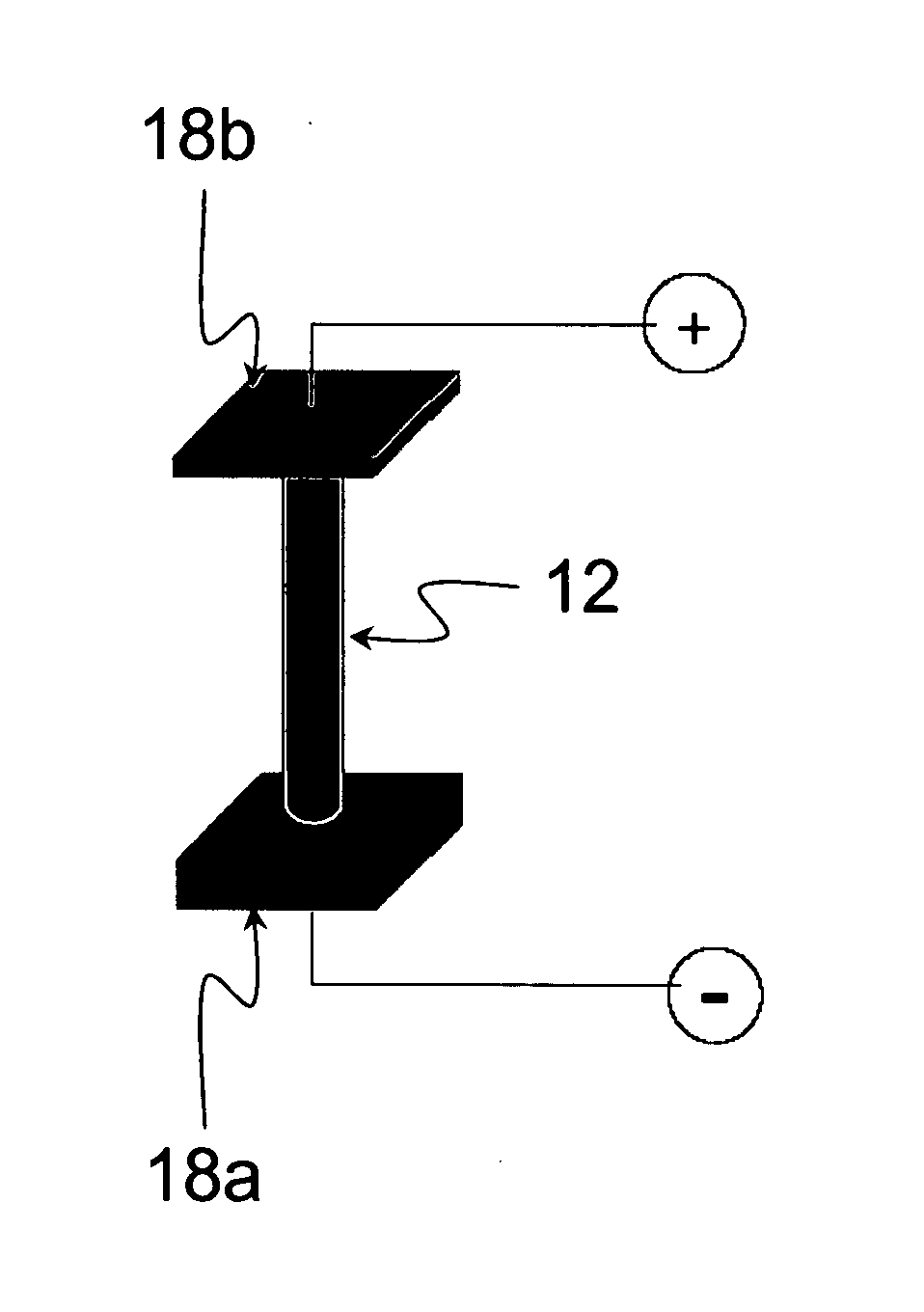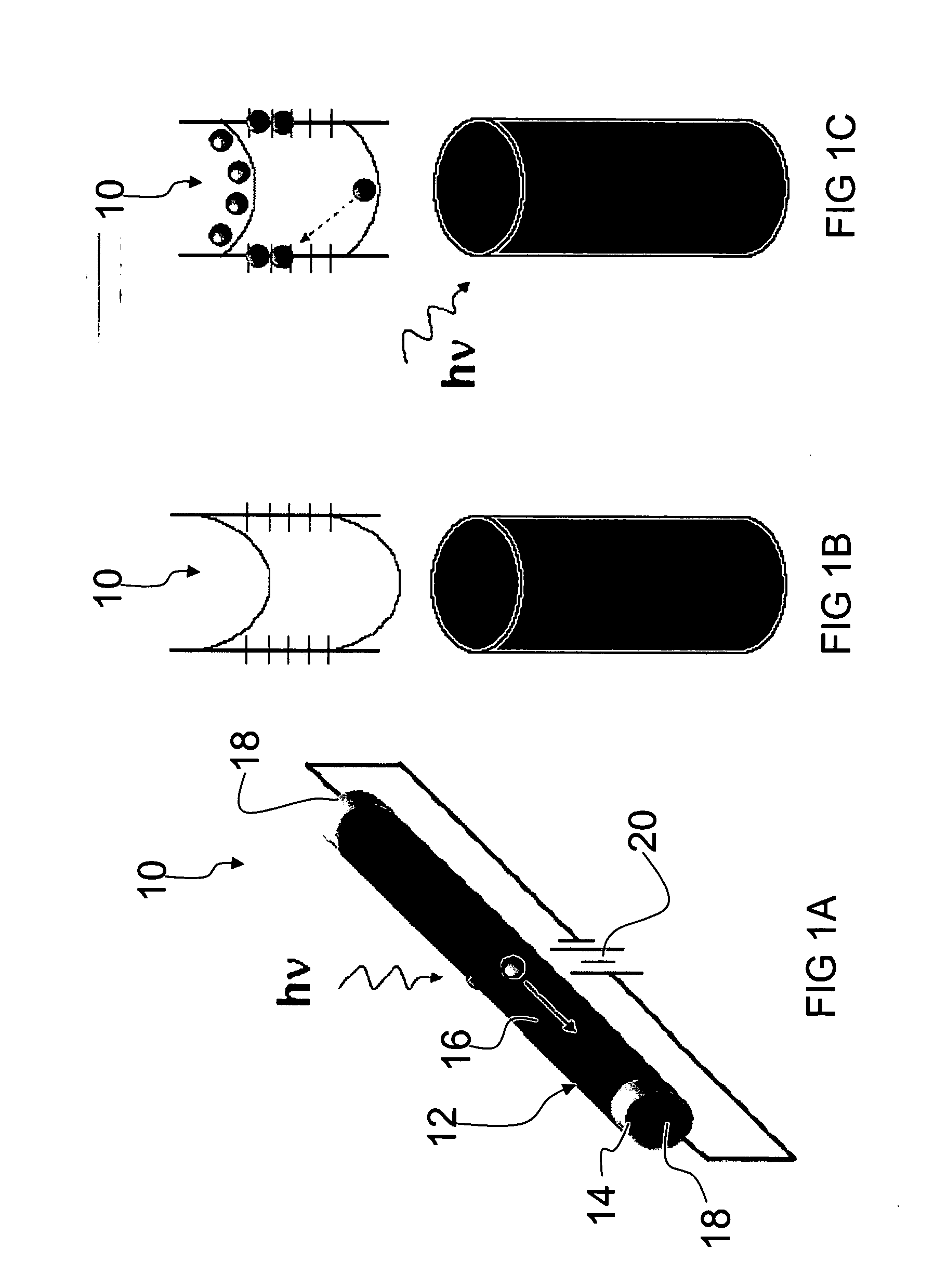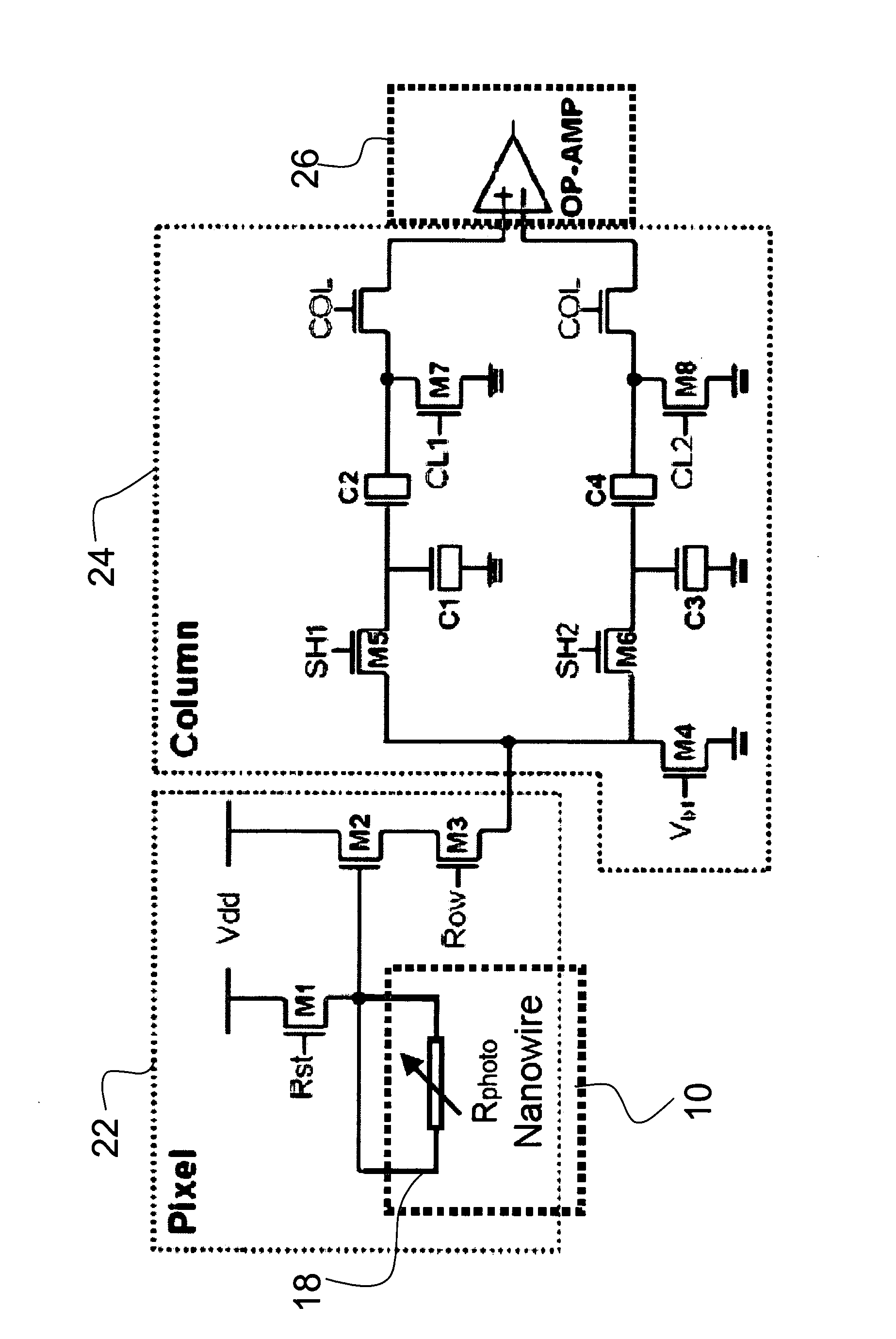Nanowire photodetector and image sensor with internal gain
a photodetector and nanowire technology, applied in the field of photodetectors and image sensors, can solve the problems of difficult incorporation of nanowires as photodetectors in practical cmos integration, sensor fixed pattern and dark-current noise, etc., and achieve the effect of enhancing the photocurrent response and high gain
- Summary
- Abstract
- Description
- Claims
- Application Information
AI Technical Summary
Benefits of technology
Problems solved by technology
Method used
Image
Examples
Embodiment Construction
[0022]The invention provides a practical 1D nanowire photodetector with high gain that can be controlled by a radial electric field established in the 1D nanowire. A 1D nanowire photodetector device of the invention includes a nanowire that is individually contacted by electrodes for applying a longitudinal electric field which drives the photocurrent. An intrinsic radial electric field to the nanowire inhibits photo-carrier recombination, thus enhancing the photocurrent response. The invention further provides circuits of 1D nanowire photodetectors, with groups of photodetectors addressed by their individual 1D nanowires electrode contacts.
[0023]1D nanowire photodetectors with internal gain of the invention can be realized with different materials, including group IV, III-V, II-VI semiconductors. A preferred 1D nanowire photodetector is a ZnO nanowire with a radial doping profile that inhibits hole and electron recombination. Embodiments of the invention provide the ability to inte...
PUM
 Login to View More
Login to View More Abstract
Description
Claims
Application Information
 Login to View More
Login to View More - R&D
- Intellectual Property
- Life Sciences
- Materials
- Tech Scout
- Unparalleled Data Quality
- Higher Quality Content
- 60% Fewer Hallucinations
Browse by: Latest US Patents, China's latest patents, Technical Efficacy Thesaurus, Application Domain, Technology Topic, Popular Technical Reports.
© 2025 PatSnap. All rights reserved.Legal|Privacy policy|Modern Slavery Act Transparency Statement|Sitemap|About US| Contact US: help@patsnap.com



